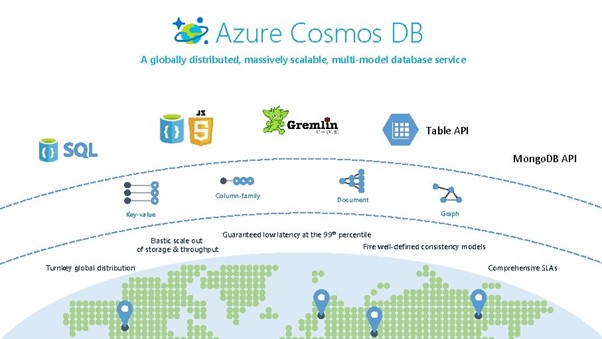- Print
- DarkLight
- PDF
A Reading Guide for Azure Cosmos DB Tips
- Print
- DarkLight
- PDF
Azure Cosmos DB is a managed database service that supports various data models (column-wide, table, and graph) with enterprise capabilities like single-digit millisecond reads and writes and 99.999 percent availability for NoSQL data. The tips are except for Microsoft documentation, including guiding notes from the field. The tips allow you, as a reader, to get on your way with this technology.
A founding father of the service is Dharma Shukla, who began in 2010 with the idea to design a highly scalable, globally-distributed database (project Florence). In the years that followed, he and his team worked on Document DB's service. And in 2018, the product was renamed to Azure CosmosDB to reflect the scalability of the planet. Initially, it supported the document- and mongo DB, followed by Gremlin (Graph API), Cassandra (Wide-Column API) later, and PostgreSQL recently.

As shown above, you see a holistic diagram of the service (lacking the recent addition of PostgreSQL). The service is built from the ground providing global distribution to comprehensive SLA capabilities. On top of that, you have several supported data models, which are accessible through different APIs.
Use cases for the database service range from event processing to storing catalog data. It is used by various fortune 500 customers like Walmart, LinkedIn, and Geico. The tips listed on the Serverless Notes site will range from understanding the resource hierarchy of Cosmos DB, and deployment options, to selecting the appropriate partition key.
What's important to understand is that Microsoft provides various database services on its Azure platform, and Cosmos DB is one of them. Other services include Azure SQL Database, Azure SQL Managed Instance, Azure SQL Database for MariaDB, and Azure Redis for Redis.
Other resources to explore:
More history and background: Cosmos DB: Microsoft Azure's All-in-One Distributed Database Service
SLA of Cosmos DB (including limitation): SLA for Azure Cosmos DB
Documentation landing page: Cosmos DB Documentation

